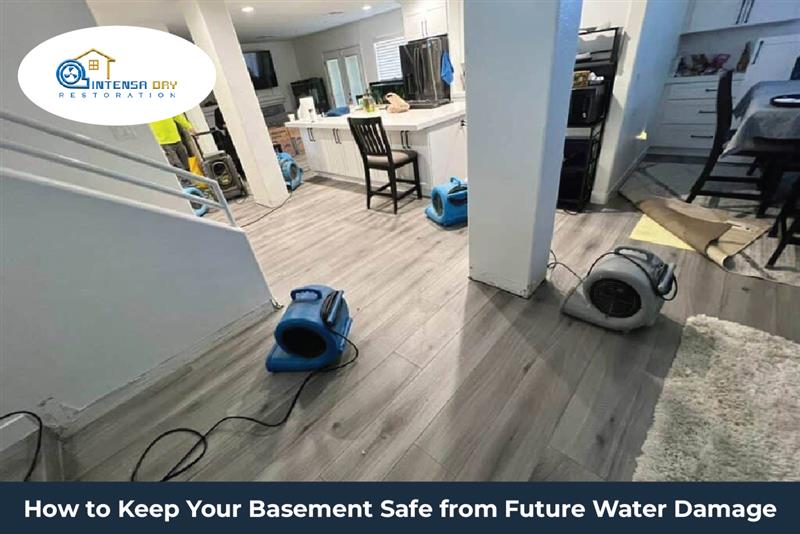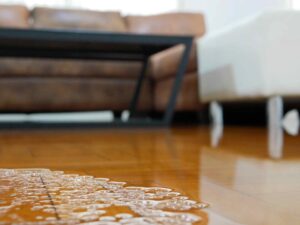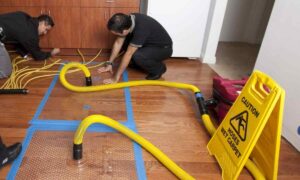Blogs
How to Keep Your Basement Safe from Future Water Damage?

When it comes to your home, the basement often takes the biggest hit during heavy rains, plumbing mishaps, or sudden floods. Water intrusion here doesn’t just ruin storage boxes—it can weaken foundations, trigger mold growth, and rack up costly repairs. The good news? You don’t have to wait for disaster to strike. With the right basement waterproofing solutions and smart prevention steps, you can keep this vital part of your home dry, safe, and healthy. From sump pump maintenance tips to foundation waterproofing methods, this guide explores effective strategies to protect your basement and save you from future headaches. Let’s dig in and learn how to make your basement a long-term fortress against water damage.
Understanding the Risks of Basement Water Intrusion
Basements sit below ground level, making them naturally vulnerable to water seepage and flooding. Heavy rains, poor drainage, and hydrostatic pressure from groundwater often force moisture into cracks and joints. Left unchecked, this can lead to mold growth, damaged drywall, and weakened structural integrity.
Homeowners sometimes underestimate these risks, assuming a small leak is harmless. In reality, even minor moisture control in basements is essential to avoid bigger problems later. Recognizing the early signs—such as damp smells, peeling paint, or soft wall spots—helps you act before the damage spreads. Knowing the risks upfront puts you in a better position to invest in basement leak prevention strategies that truly work.
Foundation Waterproofing Methods That Last
Your foundation is the first line of defense against basement flooding. When cracks develop in the concrete, water intrusion becomes almost inevitable. Foundation waterproofing methods are designed to stop this at the source.
Interior waterproofing involves applying waterproof sealants for concrete walls and using vapor barriers to keep moisture out. While this method is less invasive, it mainly tackles water that has already entered. Exterior basement waterproofing, on the other hand, involves excavating around the foundation and installing protective membranes or coatings. Though costlier, it is a permanent fix that shields the home from outside seepage. Choosing between interior vs. exterior basement waterproofing depends on your budget and the severity of water problems.
Smart Drainage: Keeping Water Away from Your Home
One of the simplest yet most effective strategies is ensuring water is directed away from your house. Poor drainage often causes unnecessary basement water intrusion repair costs. Downspout and gutter maintenance plays a big role here—clogged gutters force rainwater to spill near your foundation, soaking the soil and pressurizing basement walls.
Installing a French drain system or a drain tile system for basements is another proven solution. These underground channels collect excess groundwater and guide it away safely. Similarly, crawl space and basement drainage improvements ensure that water doesn’t sit against your home’s foundation. A little investment in proper drainage goes a long way toward long-term basement water protection.
Sump Pump Maintenance Tips Every Homeowner Should Know
If your basement has a sump pump, consider it your basement’s hero. It actively removes water buildup and prevents flooding. But like any appliance, it needs care. Regular sump pump maintenance tips include testing the pump monthly, cleaning the pit, and ensuring the discharge pipe is clear of debris.
During storm season, a backup battery or secondary pump can be a lifesaver. Many homeowners neglect this step and end up with basement flooding during power outages. Keeping your sump pump in prime condition means you’re always ready for the unexpected, ensuring effective basement waterproofing solutions even during heavy downpours.
Controlling Basement Humidity and Preventing Mold
Moisture doesn’t always enter as visible water—it can also sneak in as humidity. High basement humidity creates a breeding ground for mold and mildew, which damage surfaces and pose health risks. Basement humidity control strategies include using dehumidifiers, sealing cracks, and improving ventilation.
Mold prevention in basements is more than cosmetic. Spores spread quickly and affect indoor air quality throughout the house. By controlling moisture and installing waterproof sealants for concrete walls, you minimize both visible and invisible threats. Maintaining a dry environment ensures your basement remains safe, healthy, and usable for storage or living space.
Fixing Cracks and Seepage Before They Spread
Small cracks in concrete walls may not look alarming, but they are direct entry points for water. Basement crack repair solutions like epoxy injections or hydraulic cement can seal these weak spots effectively. Protecting basement walls from seepage at this stage prevents costly future restoration.
Hydrostatic pressure basement issues often worsen cracks over time. By combining sealing with exterior grading and drainage fixes, you relieve that pressure and reduce future risks. Repairing early not only saves money but also strengthens your basement’s resilience, keeping it safe against future water damage.
Long-Term Protection Strategies You Can Rely On
Preventing basement flooding is not a one-time project—it’s about adopting long-term basement water protection measures. Annual inspections, consistent downspout cleaning, and testing your sump pump are simple yet impactful routines. For families who have faced basement water damage restoration in the past, it’s smart to consider both immediate repairs and ongoing prevention.
Adding interior wall sealants, upgrading to a drain tile system for basements, and maintaining outdoor grading all build a strong defense. With these strategies, your basement becomes more than just storage space—it becomes a safe, dry extension of your home, ready to withstand whatever nature throws at it.
Wrap-Up
Basement water problems may feel overwhelming, but with the right mix of waterproofing, drainage, and regular maintenance, they are completely manageable. From foundation waterproofing methods to sump pump care and basement humidity control, each step you take strengthens your home’s defense against water. Unlike temporary fixes, long-term basement water protection is about combining smart strategies that prevent flooding before it even starts. Think of your basement as the foundation of your peace of mind—protect it well, and it will protect your home for years. By staying proactive today, you can avoid costly basement water damage restoration tomorrow.
FAQs
1. What’s the best way to prevent basement flooding?
A combination of good drainage, a working sump pump, and proper foundation waterproofing is the most effective prevention strategy.
2. Can I waterproof my basement myself?
Yes, small tasks like sealing cracks or applying waterproof coatings are DIY-friendly. For major issues like exterior waterproofing, professional help is recommended.
3. How often should I check my sump pump?
Test it once a month, especially before storm season, to ensure it activates and discharges water properly.
4. Are interior waterproofing solutions enough on their own?
Interior methods can manage minor leaks, but for long-term results, exterior waterproofing and proper drainage are essential.

